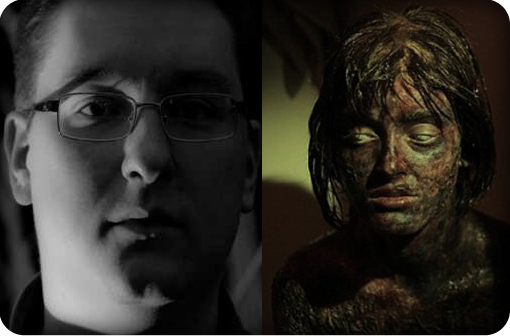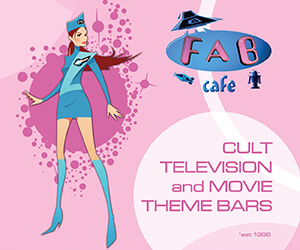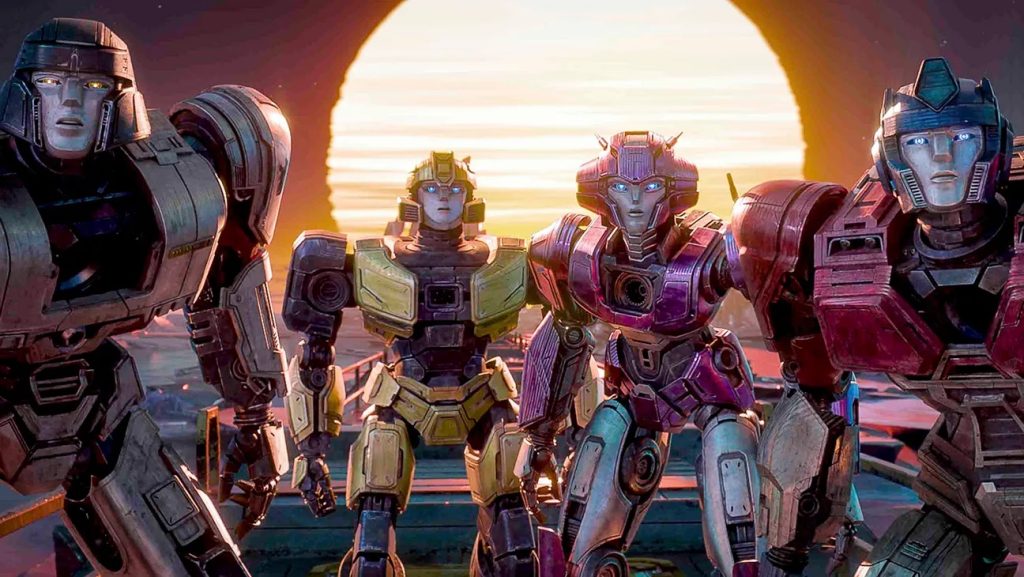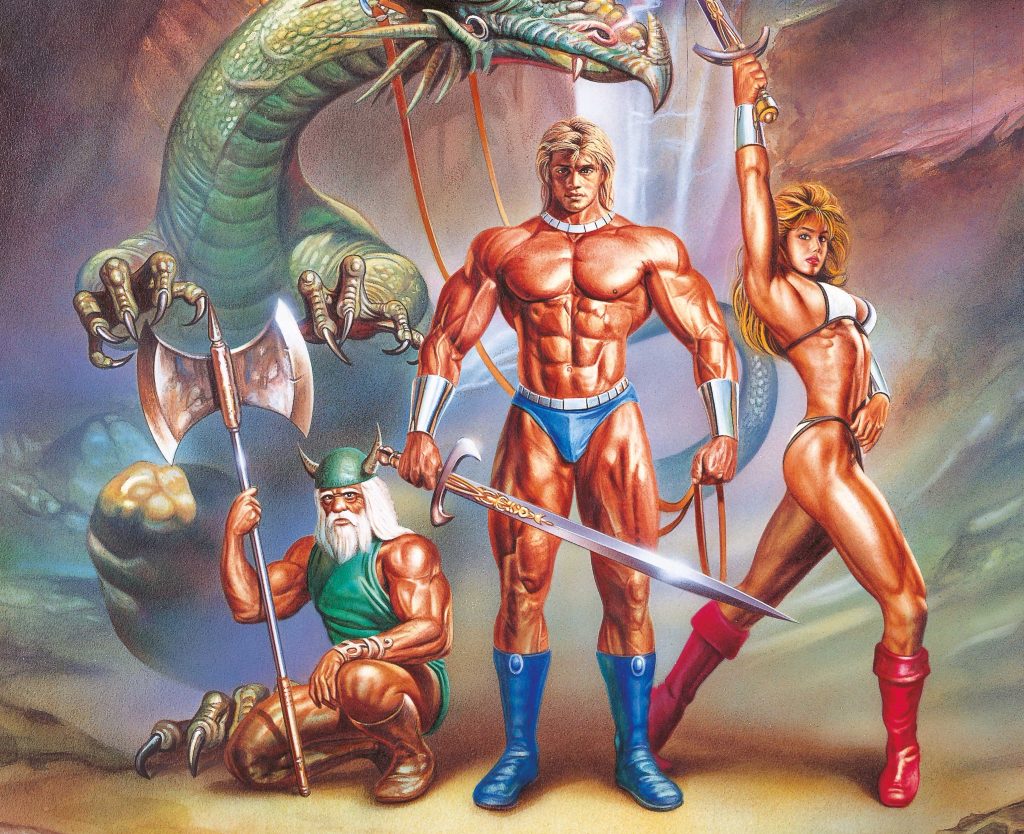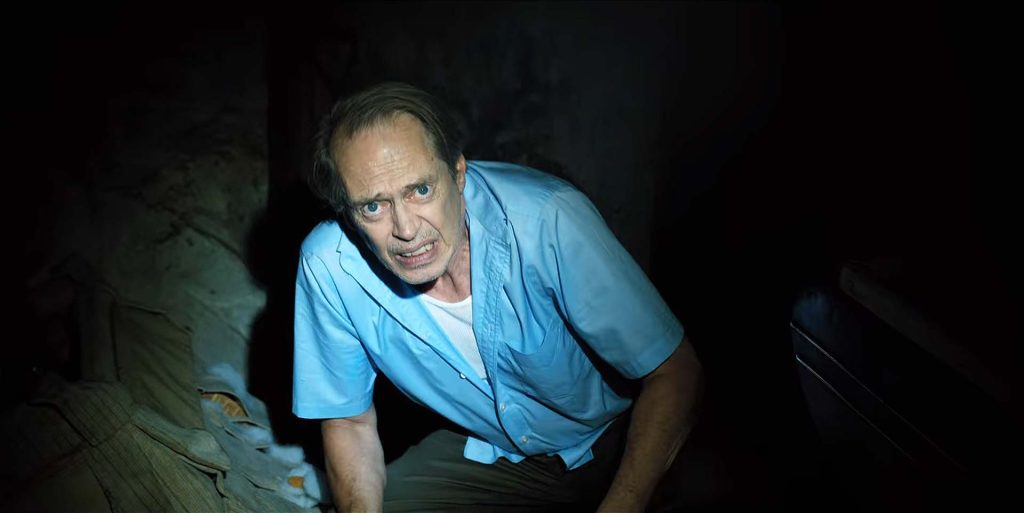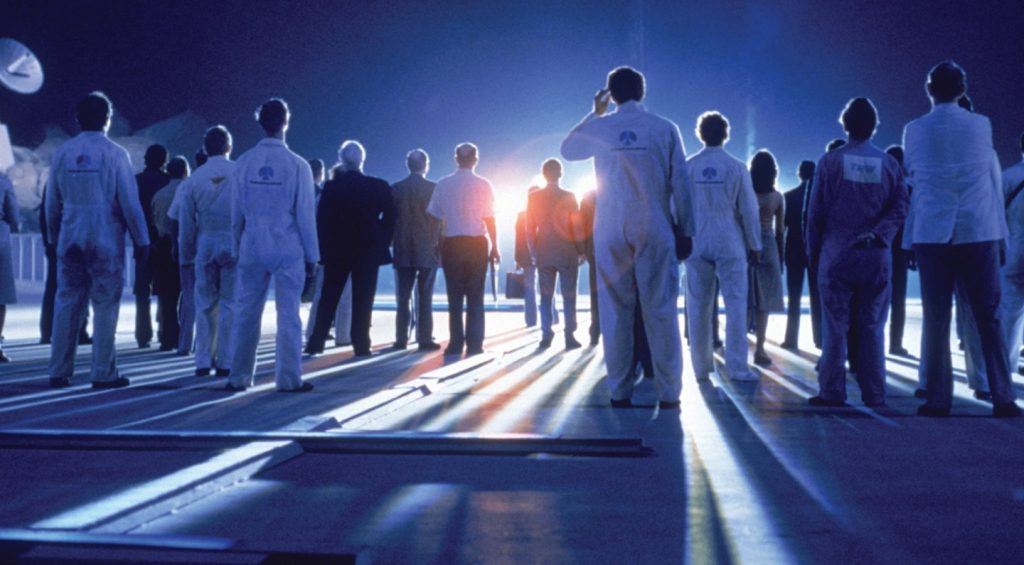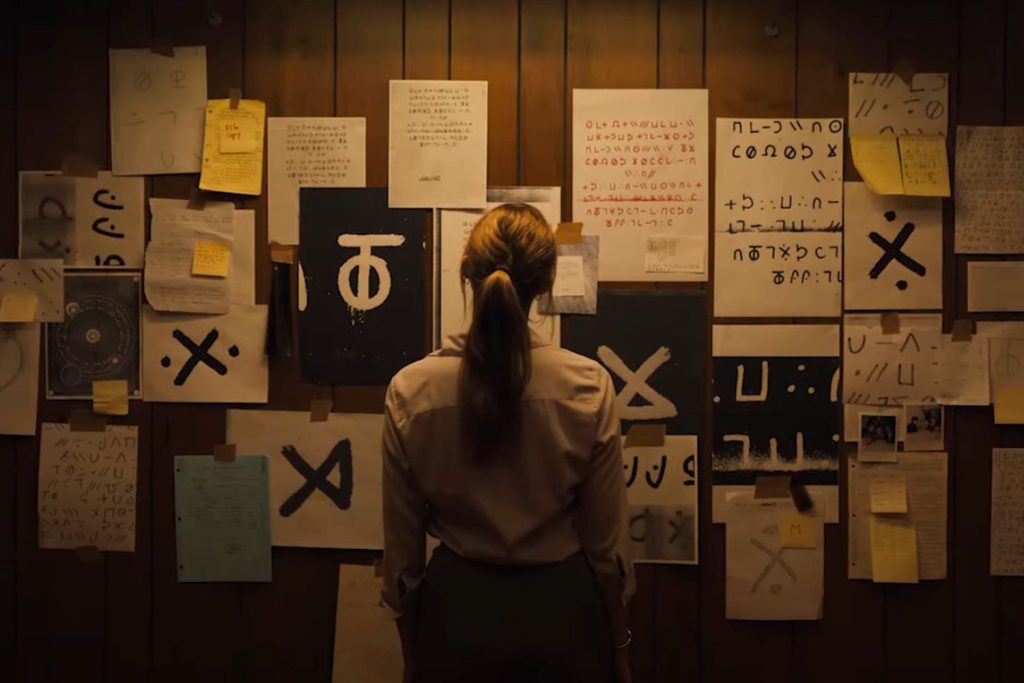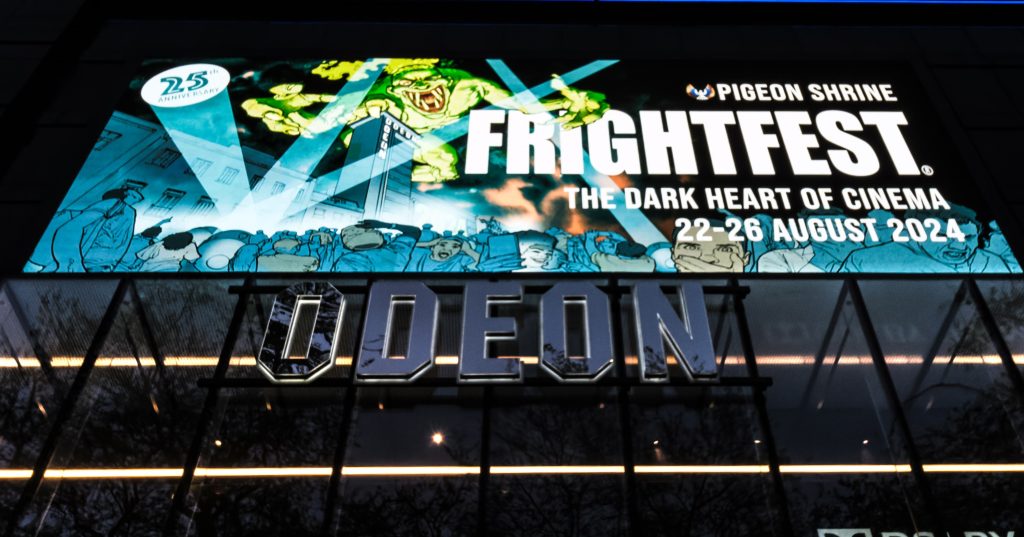
Rotting never felt this good! So says the publicity for Monster Pictures’ Thantomorphose, the feature debut of French-Canadian director Èric Falardeau. Reminiscent of New French Extremity films such as Inside (2007) and In My Skin (2002), Thanatomorphose is ‘body horror’ with an existential twist. The film takes its title from the French term for ‘the visible signs of an organism’s decomposition caused by death’: when an alienated young sculptress, Laura (Kayden Rose) moves into a Montreal apartment, her abusive relationship with boyfriend, Antoine, (Davyd Tousignant) and rejection by the artistic establishment bring about an extreme bodily reaction: she is quite literally dying inside; one morning she wakes up to find her body slowly and inexorably starting to decay.
Inspired by Kierkegaard’s The Sickness Unto Death, Falardeau structures Thanatomorphose as a psychodrama in three acts, each presenting a further stage in Laura’s physical decomposition. What begins as a few bruises gradually deteriorates into a severe case of necrotising fasciitis, and Laura locks herself in her apartment in an attempt to control and finally come to terms with what is happening to her. All this is presented in unflinching detail by Falardeau, who, together with special make up effects artist David Scherer and cinematographer Benoit Lemire, create a tight, claustrophobic and starkly realised horreur du corps on a tiny budget.
A powerful and disturbing vision of abjection, Thanatomorphose invites comparisons with early Cronenberg (Stereo, Crimes of the Future), Jorg Buttgereit (Nekromantik) and the Polanski of Repulsion, and marks Falardeau as a director to watch:
Starburst: You’ve cited Cronenberg and Buttgereit amongst your cinematic influences. Both these directors started off by making experimental movies. Did you conceive of Thanatomorphose as an ‘underground film’ in this way?
Èric Falardeau: Yes. It was meant to be an underground movie for two simple reasons. The first one is economical. We made the film with no money apart from mine so we didn’t have the means to be mainstream like using a professional postproduction house or having a large-scale distribution plan. We also couldn’t afford expensive equipment or famous actors. The other reason is more important. For me, real horror can’t be mainstream because it deals with subjects or situations that are unpleasant or taboo (thus uncommercial) in an unfamiliar way (extreme violence, experimental aesthetic, etc). The best horror films or authors always were underground before being mainstream. Horror is meant to disturb, question, trouble, and ultimately reveal something about ourselves while commercial cinema is there to entertain. Their goals are opposite so it kind of imposes modes of production, distribution, and reception that are generally qualified as underground.
How did the script develop? Did it come in stages or did the structure present itself quickly?
The script was finished in 2009 but I wasn’t able to shoot it until the summer of 2011. The film’s three act structure is quite conventional and it presented itself quickly and is inspired directly from the despair theory developed by Soren Kierkegaard in The Sickness Unto Death, a book that has a huge impact on my work. We always write about what we know or experience and Thanatomorphose has obviously a lot of myself in it. So the first draft came out quite fast. Afterwards, it was a matter of improving on what was there and also making research about decomposition. A major influence were the books by French sociologist, anthropologist, ethnologist, and scholar Louis-Vincent Thomas who was instrumental in founding thanatology as a science and field of studies. His books are great because they don’t only focus on the states of the decomposition process but also on the psychological and anthropological ones.
The abstract sequences of video textures that intersperse the narrative are intriguing. What was the idea behind these?
In the script, they were described as ‘dream sequences’. I wanted these scenes to counterbalance the slow and static aesthetic of the rest of the film while emphasising the psychological and physical states of the main character. So I decided to assume the experimental look I wanted and I asked a friend of mine, experimental film director Frédérick Maheux (Art/Crime, Théorie de la religion), to edit these scenes. Anyway, it was logical since the look of these shots were different from the rest of the movie. They are the only scenes that weren’t shot in the apartment and they were shot by myself instead of our cameraman/DOP Benoît Lemire. We decided with Frédérick to push the image texture and the sound design to create a kind of nightmarish vignettes.
Why the decision to set the film entirely in an apartment?
When I started writing the script I decided to lay down some rules for me to follow. It was my first full length feature script so I wanted to keep it simple and I knew that we would probably have to finance it by ourselves so if we had more locations and characters it would have cost a lot more money. I’d rather put money in casting, special effects, and sound than in locations.
Apart from those logistic and financial reasons, the most important aspect is that all my films are focused on a single character and that my style is very claustrophobic. I like to stay close to my main character and their inner struggles. To properly convey the state of mind and day-to-day life of the woman in Thanatomorphose I decided that the best way was to put the action in a single location, her apartment, and transform that location into a character in itself.
Was it difficult to film in an actual apartment as opposed to on a set? Did you get the shots you wanted in the confined spaces?
To use one space also was one of my main tools as a director to put the actors and the crew in the right mood. We had a lot of fun shooting the film but by the end we were all exhausted as much by the work as by the psychological state the film put us in. I think it shows in the film, the acting, the bleakness, etc.
I think that to properly write, direct, and edit a film you must be in the right emotional state; the one that corresponds to the feeling you’re trying to convey. It must come from the heart. If you don’t feel it as the creator, I highly doubt that you’ll make the right choices. As the great editor Walter Murch once said, emotion is the first rule to follow when editing a film and I think that goes for all the other aspects of production.
Shooting in an actual apartment instead of a set isn’t really worse, especially now with all these small cameras available that you can put almost anywhere. Another great thing about actual locations it that they already have a life of their own, a story. It is really hard to get that when you build a set from scratch. Finally, being stuck in a small space forces you to be more creative to find solutions to problems instead of just pulling down a wall. You can feel all that in the images.
How did you maintain the continuity of Kayden’s bodily deterioration? Did you film in script sequence? How long was the shoot?
We shot the film in chronological order over a 21 day period. We did that for two reasons: continuity and special effects. She had to be naked and/or covered with make up almost all of the shooting time. But I think it helped her in feeling the same way as the character, to be as exhausted as the character.
You’ve said that the film is about the body as ‘an object, a commodity’. What are your thoughts on the film’s sexual politics?
Sex and death are life. We’re only that: flesh and blood. Sex is how we came into the world. Then we die. Between the two, we try to cope with the meaningless of our existence by telling stories and doing what we believe are the best things. In the end, we’re only organic matter, coming from nothing and going back to nothing. The film focuses on the body to explore these aspects.
That might seem weird, but I’m not interested in gory or disturbing stuff only for the sake of it. It is boring and doing so is lazy. For me, great horror films always use the body as an excuse to talk about something else, be it our fears or our human condition. Thanatomorphose is about how a girl reacts to a physical state but that physical state means something.
While I was doing research for Thanatomorphose I found out that there are several states of mind in the mourning process, either when you have lost someone or know that you will die. One of the typical reactions a large amount of people tend to have is an increase of their libido to counterbalance the impending death, which is very interesting when you work in the horror genre. It is as if life was fighting death right until the end. And for me it made sense that the main character in my film, who is kind of death inside in a way similar to L’Étranger d’Albert Camus, slowly comes back to life while her body decays. Her own materiality makes her aware of her existence and that was one of the many aspects I wanted to explore in the film.
David Scherer’s make up effects are deeply disturbing. How did you meet David?
We met thanks to mutual friends, screenwriter Colin Vettier (Chimères, Ouvert 24/4) and filmmaker Thierry Paya (Ouvert 24/7). David Scherer (Theatre Bizarre, Chimères) was our lead practical effects artist. He’s from France so we flew him over to Montreal for the shoot. He did an amazing job on a shoestring budget. He is very creative and understands the impact of the other departments on the success of special effects like editing or cinematography. Like the film which is divided in three acts, we designed three styles of make-up ranging from simple make up to prosthetics and body suit. David Scherer is the new big name in the field. He is the next Savini or De Rossi. He has that energy and talent.
We also worked with Rémy Couture (Inner Depravity, Art/Crime) who took care of the liquids (blood, pus, etc.) and some prosthetics while David took care of all the decomposition effects and on-set work.
The distributer Monster Pictures has picked up Thanatomorphose for UK DVD release. How did you and Monster Pictures make contact?
They saw my film and the buzz around it on the internet. They simply contacted me and we were on the same page concerning the distribution of the film. The rest, as the saying goes, is history.
The film was shot on a DSLR camera and looks incredible. What are your thoughts about this format?
The decision to go film or digital really depends on the project and the mood you want to create. The format you choose is dictated by the content of your film. It is as simple as that. It is like in any other form of art. Painting for example. There is a reason why you choose oil paint over black ink. Format is dictated by what you want to say and how you want to say it. It must serve that one and only purpose.
I’m more of a film guy and almost all my other films were shot on Super 8mm or blown up to 35mm. But the reality was that we needed to make choices of where to put our money and I decided to go for the special effects, the actress, and the locations. That said, I’m really happy and I like the final result. It is all a matter of knowing your equipment and its limitations. DSLR can’t do everything. You must take note and play along.
Thanatomophose is your first feature. What are your future plans?
The film is playing the festival circuit and we have unbelievable reviews. It will be out on DVD in several countries by the end of 2013 and we hope to secure remaining territories soon. I’m also working over a couple of scripts for both feature length and short films. Only time will tell which film I’ll be shooting next. I’d like to shoot at least one of the short films by the end of 2013/start of 2014. For the next feature length my goal is 2014 or start of 2015.
Thanatomorphose is released on DVD/Blu-ray December 9th and can be pre-ordered below.

